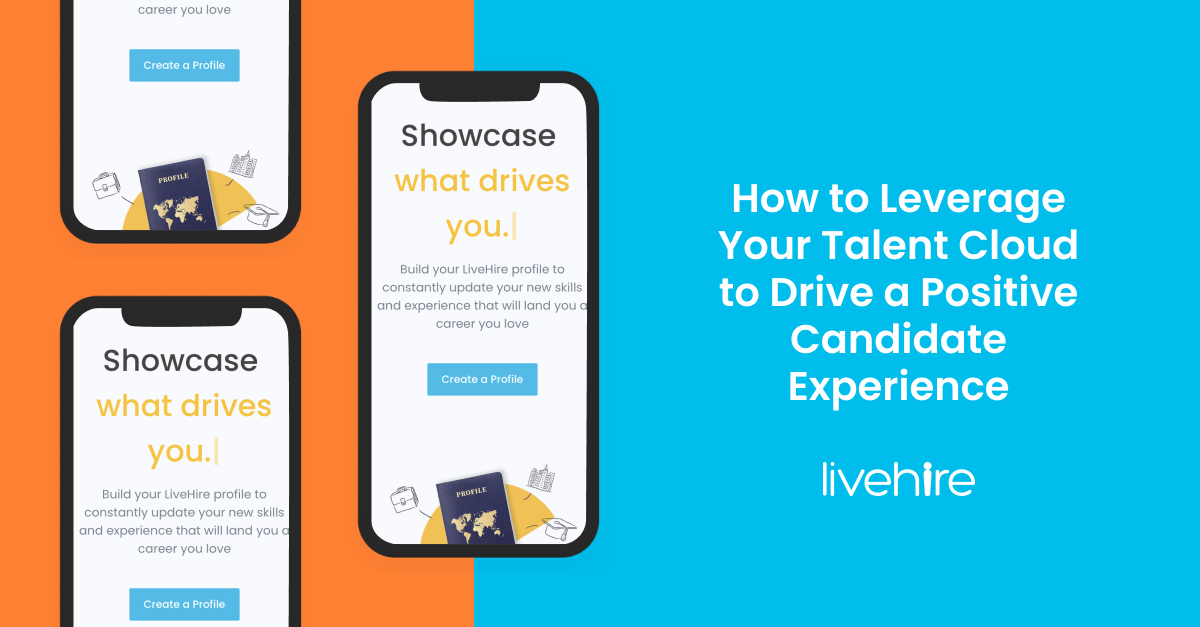
Permanent employees have been hired through direct sourcing for decades (it’s called proactive recruitment). With contractors tipped to reach 50% of a large enterprise’s total workforce by 2025, the war for quality and diverse talent, and hence the trend of direct sourcing, is now rapidly spreading to the contingent workforce.
Top Priorities for Talent and Workforce Management
In fact, research by Ardent Partners has found direct sourcing and talent pool curation are currently rated as the top 2 priorities for contractor workforce Procurement, HR and Talent Acquisition leaders.
Source: The Direct Sourcing Toolkit
What is going to change in the hiring landscape?
The global pandemic has further driven this shift, changing how companies approach hiring, internal structures, technology use and legislation. Thus, making a career of contingent working an even more appealing and viable option for candidates.
Unfortunately, adopting the traditional proactive recruitment approach to permanent hiring and applying it to contingent hiring is not the silver bullet. The average time to hire a permanent role today is 87 days. Put simply, the technologies and processes evolved by permanent talent acquisition don’t stack up when you need to hire people in days.
So, what does innovation look like when applied to the changing tides of contingent recruitment?
Before we hand you the silver bullet, you may be wondering what direct sourcing precisely means and whether or not it would be of genuine use for you as part of your contingent workforce program.
In essence, direct sourcing involves leveraging your employer brand to proactively build talent pools of new and previously known candidates that are interested in contract work for your company. The talent pools draw talent from a variety of sources including social media networks, your company’s website, referrals, job postings, past applicants, and more. Talent is then curated by your internal team or by an outsourced partner, such as a trusted third party staffing firm, an MSP, or consultant (known as managed direct sourcing). This model allows companies to significantly drive down costs by leveraging their own employer brand to attract workers directly to their organisation, and nurture the relationship in the lead up to future roles.
For contingent workforce program leaders though, this is unfamiliar and unknown territory. Even when innovation beckons, new practices can seem risky. Perhaps, you’ve also heard conflicting information about direct sourcing and are unsure exactly what to believe or whether it will work for you.
Common Myths in Direct Sourcing
There’s a number of myths around direct sourcing that might deter you from looking into it as a solution for your organisation. We dug into the top 6 myths around direct sourcing to help you find out if it really is the cost effective process for your organisation to explore.
- Many of companies are already direct sourcing
- It cannot ever be more than a ‘side-hustle’ to your supplier base
- Your internal recruitment team is best placed to grow your contingent workforce program
- You can repurpose your permanent recruitment software as a direct sourcing platform
- Finding your own contractor talent is too challenging
- Direct sourcing is too costly and time consuming
1. MYTH: Many companies are already doing direct sourcing
26% of companies believe they are doing direct sourcing.
It’s probably correct that 1 in 4 organisations believe they are, however this proves the general misunderstanding in the market.
REALITY: Less than 10% of the Fortune 1000 companies have contractor roles advertised on their careers pages1. Contingent workers (contractor roles) are the foundation of direct sourcing (remember the part about leveraging your employer brand?) Google searches and job boards are still the highest volumes of candidates today. The lack of career page presence across large organisations creates a great opportunity for those that get in early and attract the searching talent who want to work, even before a role is available.
2. MYTH: Direct sourcing cannot ever be more than a ‘side-hustle’ to your supplier base.
It may seem impossible to scale your direct sourcing program to be the primary source for your contingent hiring. Is it truly scalable or will it always be a niche play that will save a bit of money here and there on your more unique talent searches?
REALITY: Direct sourcing can quickly become your dominant talent attraction strategy. There are many companies already doing this very successfully. That said, scale is often accomplished via the support of good technology, outsourced providers, and the right blueprints for success (did someone say silver bullet?).
120+ enterprises in the US and APAC have already scaled to the point that 96%+ of their contractor hires are via their direct sourcing talent cloud2. It’s important to note that the above mentioned figure is made up of two distinct types of direct sourcing; advertised direct sourcing and curated direct sourcing.
What is advertised direct sourcing?
Advertised (Reactive), is when the candidate is sourced through a job advertisement after the vacancy is approved and opened.
What is curated direct sourcing?
Curated (Proactive), is when the candidate has already been found, engaged, and curated into relevant role pipelines (your talent pool) prior to the vacancy being approved and opened.
At the risk of going way too deep here, just know that the curated talent is what you ideally want to focus on for scaling your direct sourcing program. Curated direct sourcing is proven to be far more efficient when it comes to quality, time and cost of recruitment. Hence scalable.
Free eBook: The Direct Sourcing Toolkit
3. MYTH: Your internal recruitment team is best placed to grow your contingent workforce direct sourcing program.
So you’ve got an incredible in-house team. Perfect. You’re keen to get your direct sourcing program underway, but also mitigate costs and streamline where possible. Makes sense.
Why wouldn’t you use your in-house resources to grow your direct sourcing program for cost savings?
REALITY: Put simply, the average organisation takes 87 days to fill a role. This timeframe may be tolerable for some permanent roles, but it is not acceptable when it comes to contingent roles. In fact, contingent roles should ideally be filled within 1-5 days. The technologies and processes evolved by permanent talent acquisition don’t stack up when you need to hire people in days, you need a different approach.
The reality is, staffing suppliers (some anyway) do have the correct processes set up for your desired contingent direct sourcing strategy, and if they are given the assurance of a continuous stream of hires by running your branded talent cloud for you, the economies of scale means they can charge much lower margins per hire. The reality of what we see in the data is the combination of their processes, your brand, and economies of scale, means staffing suppliers can do this job for you for a fraction of the cost of most internal teams. Once outsourced, you can also ensure you have the right KPIs in place to measure success independently of your other systems. This way, you can verify you are getting that speed-to-hire outcome you need for contingent hires.
It’s simple to get started and scale this way by combining your direct sourcing program with a staffing partner or MSP as a managed direct sourcing process (you’ll also reap the rewards of lower fees).
4. MYTH: You can repurpose your permanent recruitment software as a direct sourcing platform.
Following on from myth #3, would there then be any benefits to applying your permanent recruitment software to your direct sourcing program? Perhaps time or cost?
REALITY: Remember earlier we discussed the importance of curated top talent to be able to hire fast, and scale a direct sourcing program? The contingent space requires talent on demand. Typical applicant tracking systems and CRM databases used in permanent hiring have an average of less than 2% of past applicants respond to future jobs when they’re contacted.
These traditional systems are primarily built to advertise every individual role and process new applicants along singular job paths. The candidates that go through these processes generally haven’t had a great candidate experience with the applicant tracking system, and do not want to be contacted again through that same experience. Sad, but true.
When considering the contractor space there are 2 key elements you need your software to deliver on:
- Live data so you know exactly who to invite to roles, without spamming;
- Candidate willingness to respond, fast.
To be successful, you need to be building a talent cloud of potential candidates that are all relevant for a specific role at a moment’s notice. Using permanent recruitment software to source, screen and fill a role often requires up to 50x more applicants to achieve success for every role – a process that is very costly and resource intensive to scale.
5. MYTH: Direct sourcing is too costly and time consuming.
Perhaps you like the idea of implementing a direct sourcing program to drive down your costs and save time but you don’t have pre-existing relationships or a past applicant database to start with. Is it all too hard?
In order to really optimise direct sourcing, you’ll want to look at implementing a Managed Direct Sourcing program. Third party Staffing firms are already experts in sourcing top talent, and given the approved use of your brand and value proposition, will literally give them superpowers.
However, many people are resistant to taking this next step as they are understandably concerned about the cost of suppliers, as well as, the time it could take to get a new program up and running seamlessly.
REALITY: Managed direct sourcing programs can save you both money and time. How?
- The costs associated with bringing on a partner to manage your direct sourcing is lower than staffing agency sourced workers. It is also zero upfront cost.
- There is a significant cost reduction with each hire, ranging from 30-50% reduction in staffing margin
- When implemented, managed direct sourcing programs average 50-70%+ placement rates within the first year. Often higher.
- Shorter role fulfilment timeframe;
- Faster time-to-hire means productivity occurs quicker.
The Silver Bullet: What to do with this information?
Now is the time to innovate and adapt.
Against a backdrop of rising workforce demands and major shifts in contingent talent supply, it seems the emergence of direct sourcing represents that innovation. With low barriers to entry, direct sourcing offers a cost effective, time efficient model for companies who are facing increased pressure to attract top contingent talent.
Based on the premise that your employer brand is the cornerstone for getting the best talent into your business, direct sourcing offers an on-demand, agile answer to the contingent talent challenge. By building your own asset of contract workers, companies inevitably gain access to greater quality, better fit hires.
However, when considering implementing a direct sourcing program, it is crucial that you get started on the right foot, especially if you’re thinking of scaling. That is, consider who will run your talent cloud technology and if outsourcing, who are the best fit staffing partners/ MSP suppliers for your needs.
And when thinking about technology, the answer is simple, Ardent Partners Quadrant rates LiveHire as the leading provider AND leading solution in Direct Sourcing and Managed Direct Sourcing. With over 120 Talent Cloud installations for companies across 14 industries, and more than twice the candidate net promoter score of all other systems, LiveHire will scale your direct sourcing program bigger, and faster, with unrivalled quality of hire.
1Review of Fortune 1000 careers pages 2LiveHire Data
Ready to learn more? Book some time with us today.



